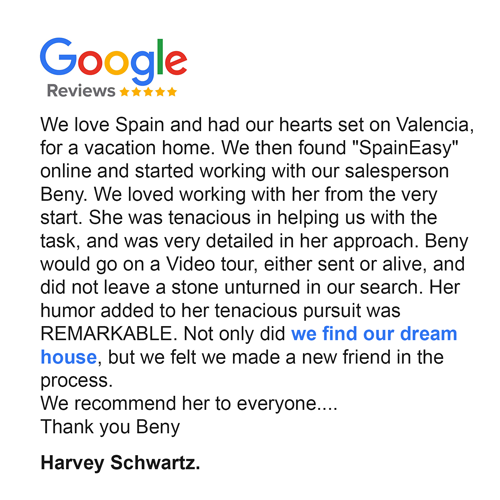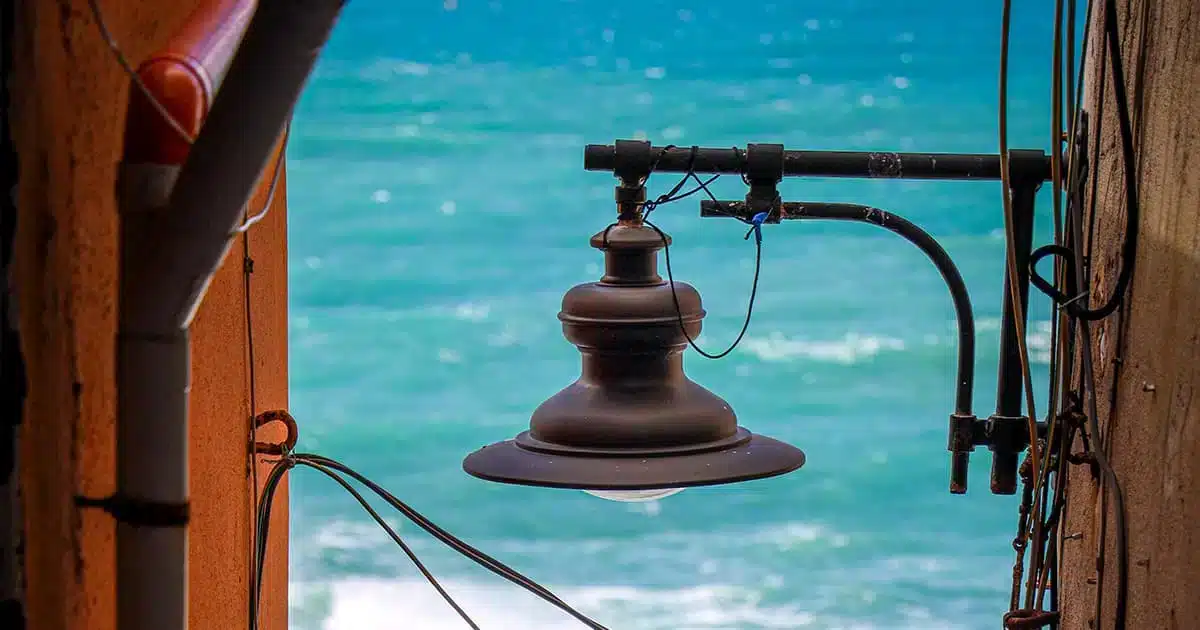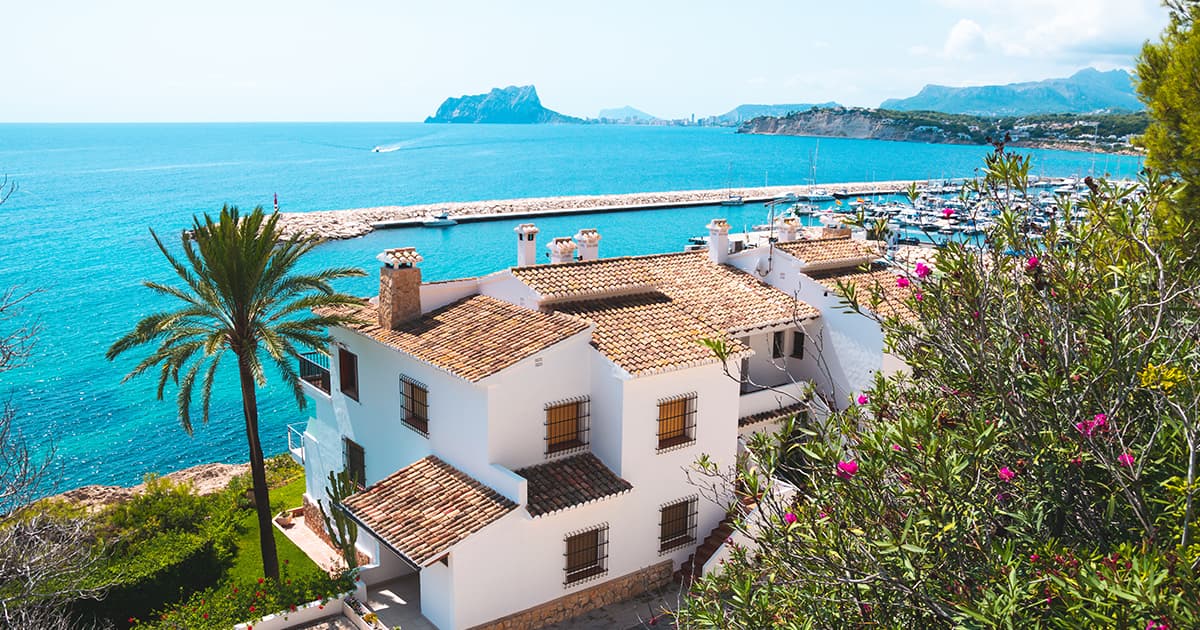
Buying Property in Spain vs USA (2025)
Last update: September 10, 2025
Reading time: 17.6 min
No Time to Read It All? Here’s the Quick Summary:
Buying property in Spain is generally cheaper than in the U.S. On a price-per-area basis, Spain averages ~€2,000–2,500/m²; U.S. metros commonly run ~$200–$350/ft² (the national median sale price is ~$410k, so units aren’t directly comparable). Closing taxes/fees are higher in Spain (~7–13% vs ~1–5% in the U.S.), but annual property taxes are typically lower (~0.2–0.6% of market value vs ~0.5–2% in the U.S.). Rental yields are competitive in both: Spain ~3–5% long-term and up to ~10% where short-term rentals (STR) are licensed; U.S. ~4–8% long-term and up to ~12% in STR-friendly zones. In 2024, foreign buyers made up roughly ~15–20% of Spanish sales. Spain shines for lifestyle (climate, healthcare, cost of living); the U.S. leads on financing choices, liquidity, and market depth.
Choosing Between Spain and the USA: What This Guide Covers (2025)
“If you’re an American weighing a beach flat in Spain against a condo in Florida,” this guide shows—briefly and clearly—how the two options differ in costs, taxes, financing, rental rules, and residency.
You’ll see side-by-side comparisons, compact tables, and a worked €/$500k example to understand upfront vs annual costs, yield vs lifestyle, and how 2025 rules affect your plan.
- Who it’s for: Americans considering a second home, retirement base, or an investment property.
- What you’ll get: Practical ranges (not cherry-picked listings), checklists you can act on, and links to official sources.
- How we compare: Search → due diligence → closing → ownership → exit, with the key tax and licensing touchpoints at each step.
Method note: Markets and taxes vary by city and region. We use typical ranges and authoritative references; confirm local figures (especially ITP/AJD, IBI, STR licensing, and U.S. property tax) before you buy.
Market Snapshot: Spain vs USA in 2025
Price Levels & Trends
Spain. Prices are rising fast. National indices show high single to low double-digit YoY gains in 2025, with asking prices above €2,400/m² in many metros. Marketing times have shortened as late-2024 inventory tightened.
USA. National pricing is flat to mildly positive. Median sale prices hover around $400k+, with wide regional variance: stronger Sunbelt/Midwest, softer expensive coastal hubs. Days on market ticked up versus 2024 in several metros.
Supply, Demand & Seasonality
Spain. Demand is fueled by locals and foreign buyers, especially on the coasts (Costa del Sol, Balearics). Spring and autumn are the busy purchase seasons; summer peaks in tourist zones.
USA. Activity is rate-sensitive: higher mortgage rates keep owners “locked-in,” limiting new listings. Classic spring/summer seasonality remains, but time-to-sell is longer in some markets.
Market at a Glance
| Metric | Spain | United States |
|---|---|---|
| Headline price level | ~€2,0k–€2,5k/m² (asks higher in prime zones) | ~$410k median sale; ~$370k avg value |
| YoY price change | ~+8–15% (region dependent) | ~0–3% (index dependent) |
| Typical days on market | ~70–80 days (faster in big cities) | ~20 days to pending / ~58 DOM (methodology varies) |
| Foreign-buyer share | High (≈15–20% of sales in 2024) | Low (≈2% of existing-home sales) |
Headline price level
Spain: ~€2,0k–€2,5k/m² (higher in prime zones)
United States: ~$410k median sale; ~$370k avg value
YoY price change
Spain: ~+8–15% (region dependent)
United States: ~0–3% (index dependent)
Typical days on market
Spain: ~70–80 days (faster in big cities)
United States: ~20 days to pending / ~58 DOM
Foreign-buyer share
Spain: High (~15–20% of sales in 2024)
United States: Low (~2% of existing-home sales)
Source :
Idealista – Spain ·
NAR – U.S.
Takeaway: Spain is in a momentum phase with constrained stock and strong coastal demand; the U.S. is in a holding pattern, with rates and supply dictating pace more than macro prices.
How the Buying Process Works (Spain vs USA)
Spain: Step-by-Step (what actually happens)
Buying in Spain is notary-led and lawyer-heavy. First, get your NIE so you can sign, pay taxes, and open accounts. Your lawyer runs due diligence (nota simple, licenses, debts, HOA/IBI). You typically reserve with an arras deposit (~10%) that locks price and timing.
- Financing: Bank orders a tasación (valuation); offer and mortgage deed run in parallel.
- Closing: You sign the public deed (escritura) before a Notary; funds settle via bank draft/transfer.
- After: Deed is filed at the Land Registry; you pay ITP (resale) or VAT+AJD (new), then switch utilities/HOA.
- Protection: Notary + Registry give strong title records, but your lawyer is your true safeguard. Title insurance is rare.
United States: Step-by-Step (how most deals run)
Deals are agent + escrow/title driven. You search via MLS with a buyer’s agent, then sign a purchase contract with contingencies (inspection, appraisal, financing, clear title) and earnest money held in escrow.
- Checks: Home inspection; lender appraisal if financed.
- Title: Title company or closing attorney does the search and issues title insurance.
- Closing: Sign deed/loan docs; funds disburse via escrow; deed gets recorded with the county.
- Variations: Attorney states (NY/MA/SC) close with lawyers; escrow states (CA/AZ/WA) close via title/escrow.
Timeline & Frictions (side-by-side)
- Speed: Spain: ~6–10 weeks post-arras (longer with mortgages). USA: ~30–60 days from contract (cash can be faster).
- Money down: Spain arras ~10% with strong remedies; U.S. earnest 1–3%, refundable under contingencies.
- Who protects you: Spain: lawyer + Notary/Registry. USA: contingencies + title insurance + (sometimes) attorneys.
- Common snags: Spain: planning irregularities, HOA/IBI arrears, STR limits, bank timing. USA: appraisal gaps, inspection renegotiations, HOA approvals, lender conditions.
Transaction Costs & Ongoing Costs
Upfront (Closing) Costs
Spain (resale)
Expect ITP 6–10% plus modest fees. With notary + registry + gestor (~€1.3–3k) and lawyer (~0.8–1.5%), most buyers land around ~7.5–12% of price. If you finance, add tasación €300–600; bank deed taxes are largely bank-borne since 2019.
Spain (new build)
Budget 10% VAT + ~1.0–1.5% AJD. Add the same notary/registry/gestor and lawyer ranges. All-in, ~12–13.5% is typical (before furnishings).
United States
Buyer closing costs are lighter. Transfer/recording 0–2%, title insurance ~0.3–0.6% (owner), and escrow/attorney $500–$2,000. Cash deals often total ~1–3%; with a mortgage, ~3–5% after appraisal $500–800 and origination ~0.5–1% of the loan.
Annual & Recurring
Spain
- IBI: ~0.4–1.1% of cadastral value (often ~40–60% of market), so effective burden ≈ ~0.2–0.6% of market.
- Community (HOA): €60–€200/mo (more for amenities).
- Insurance: €250–€450/yr. Utilities: €120–€220/mo.
- Non-residents: imputed income if vacant; IRNR on rents (19% net EU/EEA; 24% gross non-EU).
United States
- Property tax: ~0.5–2.0% of assessed/market value.
- HOA/condo: $50–$400/mo (can be higher full-service).
- Insurance: $1,200–$3,000/yr (coastal risk can spike). Utilities: $150–$300/mo.
- No federal imputed tax on second homes.
Cost Stack on a €/$500k Purchase (quick view)
| Line Item | Spain (Resale) | Spain (New Build) | USA (Cash) | USA (With Mortgage) |
|---|---|---|---|---|
| Taxes on purchase | ITP 6–10% → €30–50k | VAT 10% + AJD ~1–1.5% → €55–57.5k | 0–2% → $0–10k | 0–2% → $0–10k |
| Notary / Registry / Gestor | €1.3–3k | €1.3–3k | $0.1–0.5k | $0.1–0.5k |
| Buyer’s lawyer | ~0.8–1.5% → €4–7.5k | ~0.8–1.5% → €4–7.5k | N/A (varies by state) | $0.5–2k (attorney states) |
| Title insurance | — | — | $1.5–3k | $2.5–5k (owner + lender) |
| Escrow / Settlement | — | — | $0.5–2k | $0.5–2k |
| Appraisal / Bank fees | €0.3–0.6k (if financed) | €0.3–0.6k (if financed) | — | $0.5–0.8k + origination 0.5–1% loan |
| Estimated total | €35–60k (≈7–12%) | €60–68k (≈12–13.5%) | $5–15k (≈1–3%) | $15–25k (≈3–5%) |
Taxes on purchase
Spain (Resale): ITP 6–10% → €30–50k
Spain (New Build): VAT 10% + AJD ~1–1.5% → €55–57.5k
USA (Cash): 0–2% → $0–10k
USA (With Mortgage): 0–2% → $0–10k
Notary / Registry / Gestor
Spain (Resale): €1.3–3k
Spain (New Build): €1.3–3k
USA (Cash): $0.1–0.5k
USA (With Mortgage): $0.1–0.5k
Buyer’s lawyer
Spain (Resale): ~0.8–1.5% → €4–7.5k
Spain (New Build): ~0.8–1.5% → €4–7.5k
USA (Cash): N/A (varies by state)
USA (With Mortgage): $0.5–2k (attorney states)
Title insurance
Spain (Resale): —
Spain (New Build): —
USA (Cash): $1.5–3k
USA (With Mortgage): $2.5–5k (owner + lender)
Escrow / Settlement
Spain (Resale): —
Spain (New Build): —
USA (Cash): $0.5–2k
USA (With Mortgage): $0.5–2k
Appraisal / Bank fees
Spain (Resale): €0.3–0.6k (if financed)
Spain (New Build): €0.3–0.6k (if financed)
USA (Cash): —
USA (With Mortgage): $0.5–0.8k + origination 0.5–1% loan
Estimated total
Spain (Resale): €35–60k (≈7–12%)
Spain (New Build): €60–68k (≈12–13.5%)
USA (Cash): $5–15k (≈1–3%)
USA (With Mortgage): $15–25k (≈3–5%)
Source :
Idealista – Spain ·
NerdWallet – USA
Notes: Spain figures vary by autonomous community (ITP/AJD). In the U.S., who pays transfer taxes and title costs varies by state/county; amounts shown reflect typical buyer-side exposure.
Taxes When You Buy, Own & Sell
At Purchase
Spain.
- Resale: ITP 6–10% (by region), plus notary/registry fees.
- New build: VAT 10% + AJD ~1.0–1.5%, plus notary/registry.
United States.
- No national VAT/stamp duty. Buyer costs are mainly local transfer/recording (0–2%) plus title/escrow/attorney.
While You Own
Spain.
- IBI: ~0.4–1.1% of cadastral value (often below market).
- Wealth tax: regional thresholds/exemptions apply.
- If vacant (non-resident): imputed income taxed 19% (EU/EEA) or 24% (non-EU).
- If rented (IRNR): EU/EEA: 19% on net; non-EU: 24% on gross (no deductions).
United States.
- Property tax: ~0.5–2.0% of assessed/market value (state/county).
- Rental income: Non-residents can elect ECI (Effectively Connected Income) and be taxed on net at graduated federal rates (+ state, if any).
- Depreciation: 27.5 years straight-line on building lowers taxable income.
When You Sell
Spain.
- CGT: 19% (EU/EEA) / 24% (non-EU) on gain.
- 3% withholding: buyer withholds against your final CGT.
- Plusvalía municipal: local land-value tax based on cadastral land value and holding period.
United States.
- Federal CGT: 0/15/20% (bracket-dependent) + possible state tax.
- FIRPTA: buyer withholds 15% of gross price when seller is foreign; reconcile on filing.
Tax Checklist (Buy / Own / Sell)
| Stage | Spain | United States |
|---|---|---|
| Buy | ITP 6–10% (resale) or VAT 10% + AJD ~1–1.5% (new) + notary/registry | Transfer/recording 0–2% + title/escrow/attorney |
| Own | IBI, possible wealth tax; imputed income if vacant; IRNR on rents | Property tax 0.5–2%; net-basis rental if ECI; 27.5-yr depreciation |
| Sell | CGT 19/24%, 3% withholding, Plusvalía | CGT 0/15/20% (+ state), FIRPTA 15% withholding |
Buy
Spain: ITP 6–10% (resale) or VAT 10% + AJD ~1–1.5% (new) + notary/registry
United States: Transfer/recording 0–2% + title/escrow/attorney
Own
Spain: IBI, possible wealth tax; imputed income if vacant; IRNR on rents
United States: Property tax 0.5–2%; net-basis rental if ECI; 27.5-yr depreciation
Sell
Spain: CGT 19/24%, 3% withholding, Plusvalía
United States: CGT 0/15/20% (+ state), FIRPTA 15% withholding
Source :
Idealista – Spain ·
IRS – USA
Notes: Figures vary by region/municipality (Spain) and state/county (U.S.). Cross-border owners should plan for foreign tax credits/treaties and consider estate/ownership structuring early.
Rental Strategy & Regulations
Long-Term Rentals (LTR)
Spain. LTRs favor tenant stability. Standard terms are 5 years (individual landlord) or 7 years (corporate), with automatic renewals. In designated “stressed” areas, rent hikes follow a cap/index rather than full CPI. Demand is strong in Madrid/Barcelona/Valencia and the coasts, but evictions can take months if contested—budget time and legal costs.
Do it right: buy in buildings with clear bylaws, confirm IBI/HOA are current, and keep a vacancy/legal reserve.
United States. Most leases run 12 months with renewals. Rent control exists in select jurisdictions (e.g., parts of CA/NY/OR); elsewhere, increases are market-based with notice. Yields tend to be stronger in Sunbelt/Midwest than in high-cost coastal metros. Eviction timelines vary widely by state—know the local playbook.
Do it right: screen markets for landlord-friendliness, property tax load, insurance costs, and HOA rules.
Short-Term Rentals (STR)
Spain. STRs are heavily license-driven. Many cities/regions require registration; Barcelona is tight, Balearics/Canaries/Andalusia use zoning and caps. Expect guest registration, safety kit, and tourist tax collection. Fines for non-compliance are steep.
U.S. Rules are city-specific (NYC very restrictive; LA/SF/Honolulu/Miami regulate with permits, night caps, or primary-residence tests). HOAs often ban sub-30-day stays even if the city allows them. Plan for occupancy taxes and audits.
Renting Framework Snapshot
| Dimension | Spain LTR | Spain STR | USA LTR | USA STR |
|---|---|---|---|---|
| License? | No | Yes (often) | No | Often yes |
| Typical term | 5–7 yrs | Nightly/weekly | 12 months | Nightly/weekly |
| Rent changes | Capped/indexed in stressed areas | Dynamic | Mostly market-rate; pockets of RC | Dynamic |
| Gross yield (typ.) | ~3–5% | ~6–10% (licensed hotspots) | ~4–8% | ~6–12% |
| Key constraint | Renewals; slower evictions | Licenses/caps/tourist tax | State law; property tax | City bans; HOA bans |
Note: Ranges are indicative — verify locally.
License?
Spain LTR: No
Spain STR: Yes (often)
USA LTR: No
USA STR: Often yes
Typical term
Spain LTR: 5–7 yrs
Spain STR: Nightly/weekly
USA LTR: 12 months
USA STR: Nightly/weekly
Rent changes
Spain LTR: Capped/indexed in stressed areas
Spain STR: Dynamic
USA LTR: Mostly market-rate; pockets of RC
USA STR: Dynamic
Gross yield (typ.)
Spain LTR: ~3–5%
Spain STR: ~6–10% (licensed hotspots)
USA LTR: ~4–8%
USA STR: ~6–12%
Key constraint
Spain LTR: Renewals; slower evictions
Spain STR: Licenses/caps/tourist tax
USA LTR: State law; property tax
USA STR: City bans; HOA bans
Source :
Idealista – Spain ·
NAR – USA
Note: Ranges are indicative — verify locally.
Practical Tips
- Underwrite buffers: vacancy (LTR 4–8 wks; STR realistic occupancy), capex, legal.
- STR “trifecta”: city license + building/HOA permission + neighborhood tolerance.
- Stress-test: rate hikes, insurance spikes (U.S. coastal), rising community fees (Spain).
- Tax angle: Spain STRs can trigger business-style obligations; U.S. STRs change tax/zoning treatment—plan filings early.
Financing & Leverage
Spain Mortgages for Americans (Non-Residents)
Banks lend conservatively: 60–70% LTV (often 60–65% if income is abroad), 20–30-year terms, rates ~3.2–4.5% in 2025 (profile/bank dependent).
-
Documents: Passport + NIE, last 2–3 years of tax returns, 6–12 months of bank statements, employment/contract (or company accounts), debt summary, tasación (valuation).
-
Fees (approx. USD): Valuation $330–$660; bank arrangement 0–1%; home insurance required (life insurance sometimes). Since 2019, many mortgage-deed costs are paid by the bank—confirm in the FEIN/ESIS.
-
Underwriting focus: Global DTI ≤ 30–35%, documented source of funds, fully legal property (licenses/first occupancy).
U.S. Mortgages for Foreign Nationals
Available but with larger down payments and rate add-ons vs residents.
-
Typical LTV: 60–70% (30–40% down).
-
Rates/terms: Often +150–300 bps vs prime U.S. rates; 30-year fixed sometimes available; ARMs common.
-
Documents: Passport, ITIN (or plan to obtain), proof of foreign income/assets, bank/credit references, reserves.
-
Residents (U.S. buyers): Easier access to 30-year fixed with 5–20% down at mainstream rates.
-
Why many buy cash: Documentation frictions, appraisal gaps, higher rates, and speed to close.
Impact on ROI (illustrative on $500,000)
Spain (non-resident, long-term rental)
-
Price: $500,000
-
LTV: 65% → $325,000 loan @ 3.8% / 25 years → ~$20.1k/year debt service
-
Gross rent (~4.5%): $22.5k/year
-
Operating expenses (IBI/HOA/insurance/maintenance): ~$6.2k/year
-
NOI: $16.3k/year → cash flow ≈ −$3.8k/year
-
Year-1 principal repaid: ~$7.8k (helps total return)
-
Breakeven guide: Mortgage constant ~6.2% → needs ~4.0% cap rate at 65% LTV just to cover debt service; after opex, many markets need ≥5% to go positive.
United States (80% LTV, resident-style loan)
-
Price: $500,000; $400,000 loan @ 6.75% / 30 years → ~$31.1k/year debt service
-
Gross rent (~6%): $30k/year
-
Operating expenses: ~$18k/year
-
NOI: $12k/year → cash flow ≈ −$19.1k/year
-
Breakeven guide: Mortgage constant ~7.8% → needs ~6.24% cap rate at 80% LTV to cover debt service.
Levers to improve outcomes: Lower LTV, buy higher-cap-rate assets (small multis/secondary markets), or secure cheaper debt.
Sensitivity (rules of thumb)
-
+100 bps rate (Spain case) → ~−$3–4k/year cash flow at 65% LTV.
-
+1% yield on $500k → +$5k/year rent.
-
Short-term rentals (STR): Can reach ~6–10% gross, but carry higher opex and licensing risk—model occupancy conservatively.
USD figures for Spanish fees are approximate for a U.S. audience; verify exact euro amounts at closing.
Residency, Visas & Time Limits
Spain: Living Legally After You Buy
Buying a Spanish home does not grant residency. The real-estate Golden Visa is discontinued. Without residency, Americans can stay up to 90 days in any 180 across Schengen.
Common paths for longer stays
- Non-Lucrative Visa (NLV): For retirees/independent income; private health insurance required; no local work.
- Digital Nomad Visa (DNV): For remote work with foreign employer/clients; income thresholds apply.
- Other routes: student, family, employer-sponsored, entrepreneur.
Timing & tips
- Typical sequence: consulate filing → approval → TIE card in Spain (often ~1–3 months after arrival, varies).
- Owning a home can support your file (accommodation/means) but is not a legal basis by itself.
United States: Owning ≠ Immigration Status
A U.S. home purchase gives no visa or green card. You still enter on ESTA (up to 90 days) or B-2 (often up to 6 months, at CBP discretion).
Investor/worker options (not tied to a house)
- EB-5: $800k–$1.05M in a job-creating enterprise.
- E-2 (treaty only): Substantial investment in an active business you direct.
- Work visas (H-1B, L-1, O-1) depend on employment/ability.
Tax note: Long stays can trigger U.S. tax residency under the substantial presence test.
Case Studies (Lifestyle vs Investment)
“Sun & Lifestyle”: Retiree on the Costa del Sol
A semi-retired U.S. couple wants sun, healthcare access, and walkability. They target a €450–550k two-bed in Málaga/east Marbella, accepting Spain’s higher upfront costs (~7–12% resale).
- Holding costs: IBI €450–800/yr, HOA €120–200/mo, insurance €300–500/yr, utilities €120–180/mo.
- Residency: Likely NLV (passive income + private insurance).
- Rent when away (LTR): €1,300–1,900/mo; net yields often ~3–4.5% without STR licensing hassle.
- Risk control: Low leverage (≤60–65% LTV), cash buffer for HOA specials.
Why it works: Lifestyle first, steady costs, and simple long-term let to offset expenses.
“Cash-Flow Focus”: U.S. Sunbelt Duplex
A yield-oriented buyer looks at a $450–550k duplex in a landlord-friendly Sunbelt suburb.
- Financing: Residents often 20% down, 30-yr fixed; foreign-national loans need 30–40% down at higher rates.
- Illustrative $500k deal: Rents $48k/yr less vacancy; opex ~$15–16.5k → NOI ~$29–30k. Debt on $400k @ 6.75% ≈ $31.1k/yr → near breakeven at list.
- Tax levers: Depreciation (27.5 yrs); consider cost seg and 1031 (for U.S. residents).
Why it works: Target 7–8% gross or small multis to push cash-on-cash positive; watch property tax and insurance creep.
“Hybrid”: City Pied-à-Terre — Madrid vs Miami
A professional uses the home 3–4 months/yr, renting the rest.
- Madrid (~€400k 1-bed): LTR €1,300–1,700/mo (~3.9–5.1% gross). STR in central buildings is often restricted; plan on LTR. Lower HOA/insurance, high walkability.
- Miami (~$500k condo): Many buildings ban <30-day stays—find STR-permitted stock. LTR $2,600–3,200/mo; STR can generate seasonal cash flow but faces HOA + insurance + TOT (Transient Occupancy Tax) and occupancy swings.
Pick Madrid for cost control and easy LTR; pick Miami if you can secure an STR-legal building and manage higher carrying costs.
Quick Checklist (apply to any case)
- Licenses & bylaws: STR permitted? HOA/community rules aligned?
- True all-in yield: Include taxes, HOA/IBI, insurance, mgmt, capex, vacancy.
- Leverage fit: Aim DSCR ≥ 1.20× at conservative rents/rates.
- Exit taxes: Spain 3% retention + CGT + plusvalía; U.S. FIRPTA 15% + CGT.
- Insurance reality: U.S. coastal premiums and Spain HOA assessments can swing returns.
Choosing Spain vs the USA:
If you’re lifestyle-first, Spain tends to win. You get a Mediterranean base, walkable cities, strong public healthcare, and generally lower annual carrying costs. You’ll accept higher upfront taxes (ITP or VAT+AJD), lower LTV (60–70%), and modest long-term yields (~3–5% LTR; ~6–10% only where STR is licensed). The system is notary-led—your lawyer is key—and rent rules can cap increases in “stressed” areas. Buying a home doesn’t grant residency, but NLV/DNV can fit many Americans.
If you’re finance/leverage-first, the USA is often better. You’ll find high-LTV, long-term fixed loans (for residents), fast escrow/title closings, and a wide range of markets with ~4–8% LTR yields (higher in small multis/STR-legal pockets). Closings are cheaper, but expect higher annual property taxes (≈0.5–2%), rising insurance in some states, and city/HOA-specific STR rules.
Next step: Share your budget, target cities, and use plan (LTR/STR/personal) and I’ll produce a city-specific mini-plan with cost stacks, yield ranges, and compliance checkpoints.












